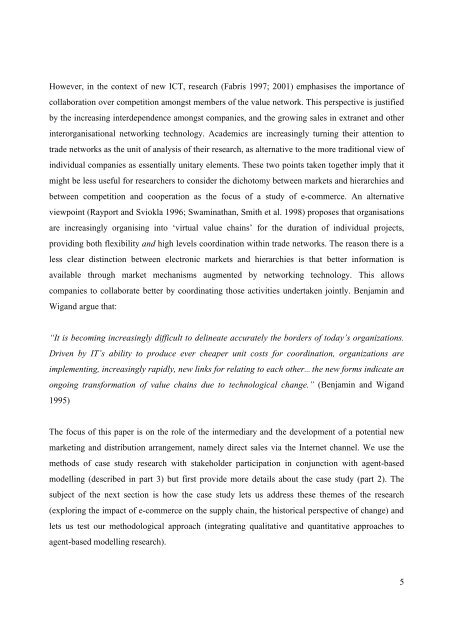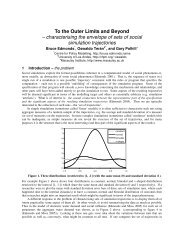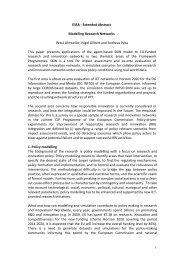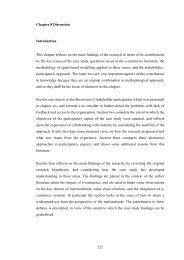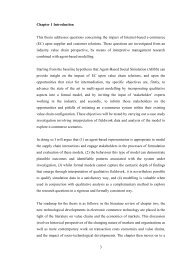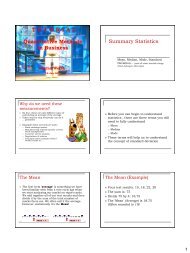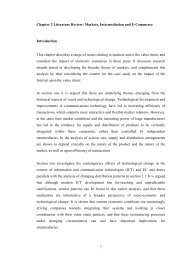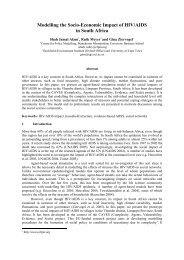1 Agent-Based Modelling Incorporating Qualitative and Quantitative ...
1 Agent-Based Modelling Incorporating Qualitative and Quantitative ...
1 Agent-Based Modelling Incorporating Qualitative and Quantitative ...
You also want an ePaper? Increase the reach of your titles
YUMPU automatically turns print PDFs into web optimized ePapers that Google loves.
However, in the context of new ICT, research (Fabris 1997; 2001) emphasises the importance of<br />
collaboration over competition amongst members of the value network. This perspective is justified<br />
by the increasing interdependence amongst companies, <strong>and</strong> the growing sales in extranet <strong>and</strong> other<br />
interorganisational networking technology. Academics are increasingly turning their attention to<br />
trade networks as the unit of analysis of their research, as alternative to the more traditional view of<br />
individual companies as essentially unitary elements. These two points taken together imply that it<br />
might be less useful for researchers to consider the dichotomy between markets <strong>and</strong> hierarchies <strong>and</strong><br />
between competition <strong>and</strong> cooperation as the focus of a study of e-commerce. An alternative<br />
viewpoint (Rayport <strong>and</strong> Sviokla 1996; Swaminathan, Smith et al. 1998) proposes that organisations<br />
are increasingly organising into ‘virtual value chains’ for the duration of individual projects,<br />
providing both flexibility <strong>and</strong> high levels coordination within trade networks. The reason there is a<br />
less clear distinction between electronic markets <strong>and</strong> hierarchies is that better information is<br />
available through market mechanisms augmented by networking technology. This allows<br />
companies to collaborate better by coordinating those activities undertaken jointly. Benjamin <strong>and</strong><br />
Wig<strong>and</strong> argue that:<br />
“It is becoming increasingly difficult to delineate accurately the borders of today’s organizations.<br />
Driven by IT’s ability to produce ever cheaper unit costs for coordination, organizations are<br />
implementing, increasingly rapidly, new links for relating to each other…the new forms indicate an<br />
ongoing transformation of value chains due to technological change.” (Benjamin <strong>and</strong> Wig<strong>and</strong><br />
1995)<br />
The focus of this paper is on the role of the intermediary <strong>and</strong> the development of a potential new<br />
marketing <strong>and</strong> distribution arrangement, namely direct sales via the Internet channel. We use the<br />
methods of case study research with stakeholder participation in conjunction with agent-based<br />
modelling (described in part 3) but first provide more details about the case study (part 2). The<br />
subject of the next section is how the case study lets us address these themes of the research<br />
(exploring the impact of e-commerce on the supply chain, the historical perspective of change) <strong>and</strong><br />
lets us test our methodological approach (integrating qualitative <strong>and</strong> quantitative approaches to<br />
agent-based modelling research).<br />
5


